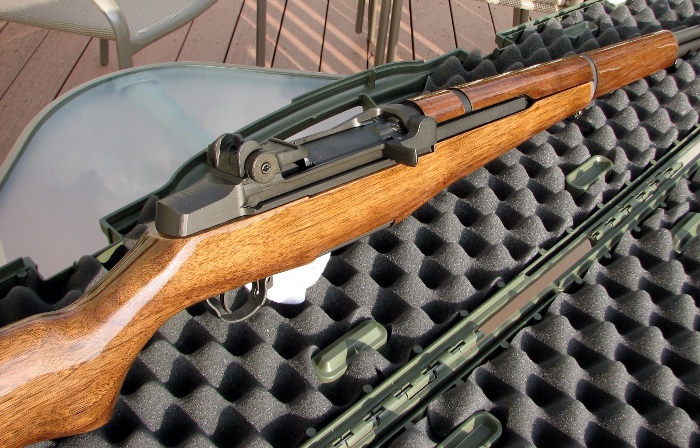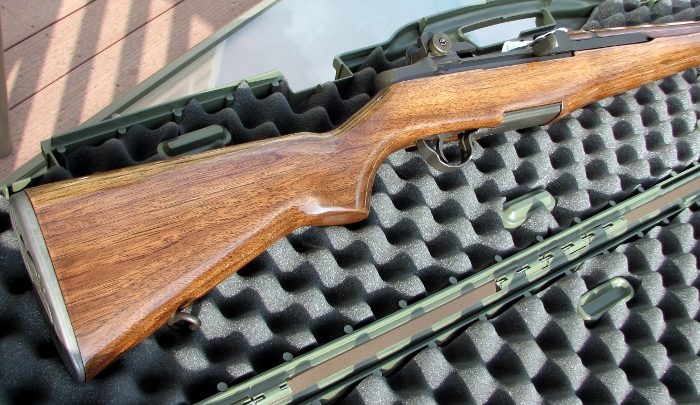Results 11 to 18 of 18
Thread: Need Advice on Oil Finishes
-
09-30-2011, 12:24 PM #11Senior Member

- Join Date
- Mar 2011
- Location
- Washington DC Metro Area
- Posts
- 468
Thanked: 114
Thanks, Jerry. You and I were apparantly typing at the same time. :-)
-
10-01-2011, 03:45 AM #12Senior Member

- Join Date
- Mar 2007
- Posts
- 608
Thanked: 124
Honestly, I dont like making scales much, so I haven't done it alot. When I've made them I usually follow these steps-Dye, BLO, thin cut shellac, top coat with wipe on ploy or superglue or epoxy. I remove or alter some of the steps for different woods and how the test pieces turn out.
If your looking for a pure oil finish you might want to go with tung, pretty much everybody loves that stuff for that. Just be sure to get real tung oil and not the stuff thats a mix of BLO, tung and other additives, like Formbys.
I'm about to refinish a stock, so I'm curious about a few things--Are you using Tru-oil and raising a slurry with sandpaper, then just wiping it in the pores with your fingers? Are you thinning it, or just putting on a light coat on the later steps? Sorry about the question bomb (and the threadjack, Diyguy), I've been trying to get as much information as I can on the subject.
-
10-01-2011, 02:37 PM #13

Perfect timing with this thread Diyguy - I just picked up a bottle of Tru-oil the other day with the intent of giving it a go on my next project (a Palmera with ebony scales). And while I feel pretty confident about using it after reading other threads (incl. on other woodworking related forums), the great responses in this thread have helped tie the different concepts together for me...
And I'm particularly interested in Xander's technique of using ArmorAll as a curing catalyst - am definitely going to experiment with that on a scrap piece before starting the project.John
-
10-01-2011, 08:28 PM #14

On the first coat, just wipe on the Tru-Oil with your finger and keep it rather thick. With the sandpaper, work up a slurry and it will fill the holes. You are not trying to reshape or smooth with the sandpaper, just making a slurry. The shellac and sawdust will fill the holes. After you have worked it in, then let it dry thoroughly. After it is dry, then you will take the shellac off back down to the wood layer. The surface may look splotched with wood and shellac, but that is okay. Just make sure the surface is smooth and maintains its shape. You shouldn't have any grains sticking up, but if you do, just sand them back down.
When I mention the thin, or thinner, layers, I don't usually dilute with a fresh batch of Tru-Oil. If I use an older batch, then I will thin the solution. On the second or third layer, I will tap the bottle every so often as I worked the shellac in. As I get to the 3rd through 7th layer, it generally only takes one or two drops to do the entire surface. I am doing this entire process with plastic gloves (disposables) and use a fresh set with each layer.
-
10-03-2011, 01:47 AM #15Senior Member

- Join Date
- Mar 2007
- Posts
- 608
Thanked: 124
-
10-04-2011, 02:49 AM #16

You cannot rush a good finish. There are a lot of different oil finishes out there. Linseed oil does not harden. It was used extensively on gun stocks but the oil will not harden, it stays oily forever. Linspeed oil will harden. Danish oil is another I use a lot of. It soaks in and brings out the depth of the grain. It does have a volatile and resin so it will harden but takes time. I will often use a couple coats of Danish oil then after a weeks drying follow it up with 3 or 5 coats of urethane or varnish for a protective layer. Tong oil will also harden like Danish oil. True oil is a linseed oil with additives to polymerise is so you get the benefit of the oil look with a hard finish. Waterlox is also a modified tong oil and will give you very good water resistance.
Anything gloss finish takes a lot of coats, a lot of sanding between coats and patients. It is a very un forgiving finish. The smallest flaw stands out. I will go with a dozen coats with a 600 grit or higher sanding between each coat to get a perfect mirror finish. But in the end, you cannot speed up the process. The best workmanship in the world is ruined by a hastily applied finish.
As an example, this is my M1. I pulled the wood, and fitted everything, sanded it out to 800 grit then gave it 3 coats of true oil over 4 days. Then sanded it back to wood. Then gave it another 3 coats of true oil and sanded it back to wood again. that fills in the grain. The gave it another 6 coats of true oil with a 800 grit sanding between each coat. And use thin coats. A heavy coat will pool and run. Then you have to sand it back to wood and start over. After a dozen coats and two weeks, you get something like this...


-
The Following User Says Thank You to cannonfodder For This Useful Post:
Malacoda (10-08-2011)
-
10-04-2011, 02:55 AM #17Senior Member


- Join Date
- Jan 2011
- Location
- Roseville,Kali
- Posts
- 10,432
Thanked: 2027
Did the cartouches survive?
-
01-15-2015, 03:44 PM #18Junior Member

- Join Date
- Oct 2014
- Location
- Houston
- Posts
- 12
Thanked: 1
I've tried the Tru Oil and Armor All method. All I ever end up with is a pair of scales that is covered in sticky goop that NEVER cures. I've tried on scrap wood and scales. I thought it sounded too good to be true. I'm glad I didn't try it on my gunstock.


 6Likes
6Likes LinkBack URL
LinkBack URL About LinkBacks
About LinkBacks






 Reply With Quote
Reply With Quote

